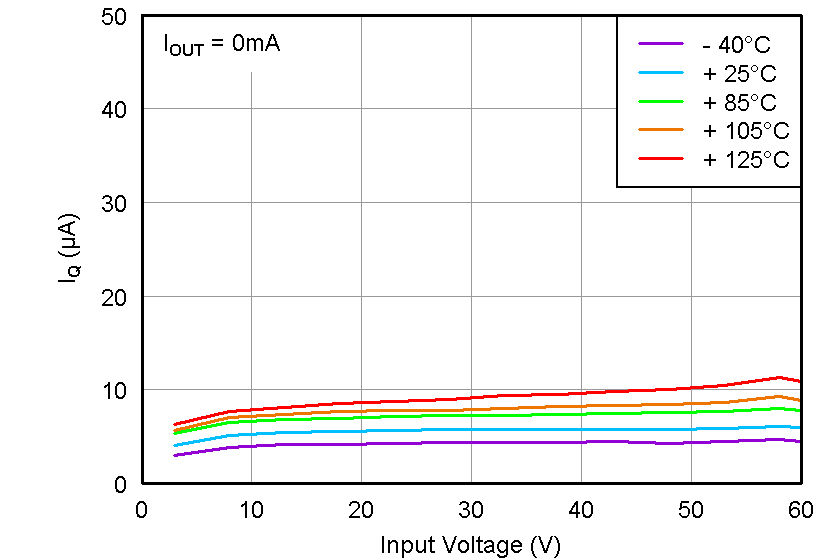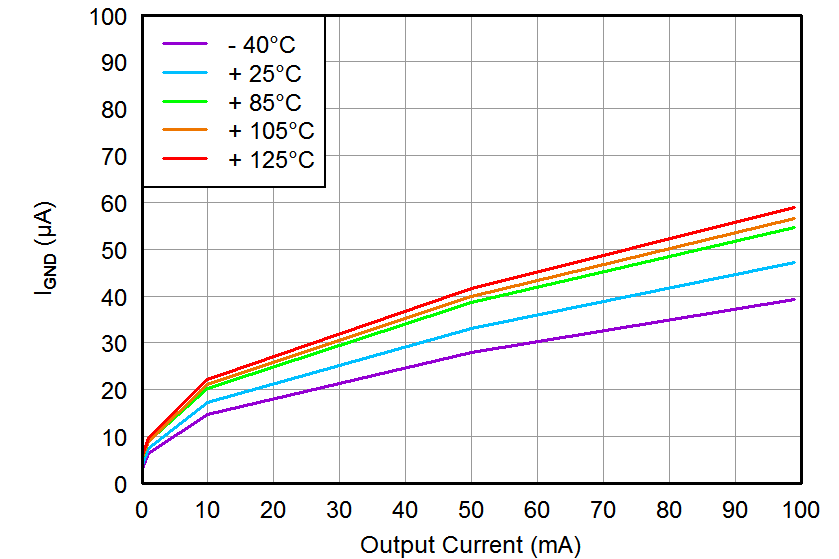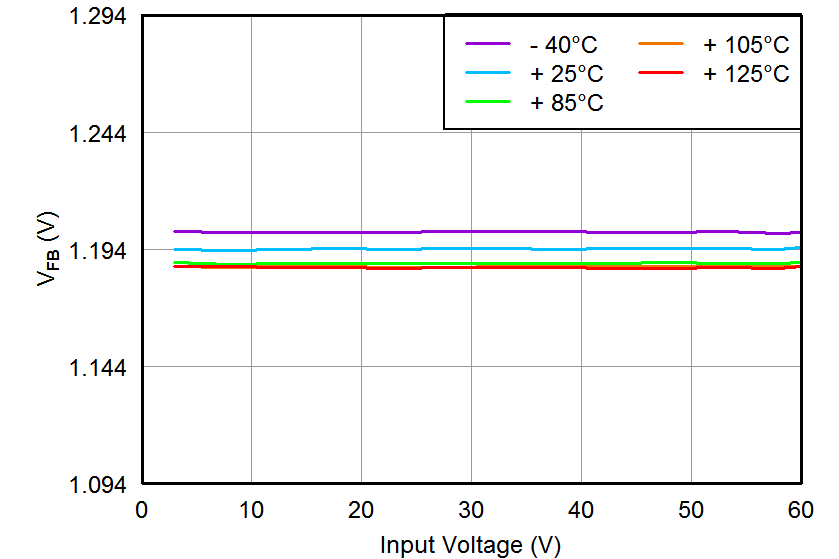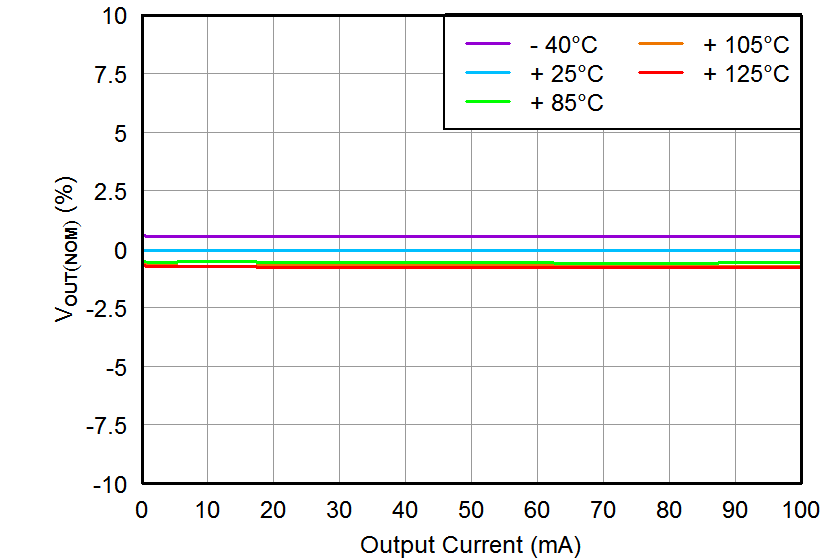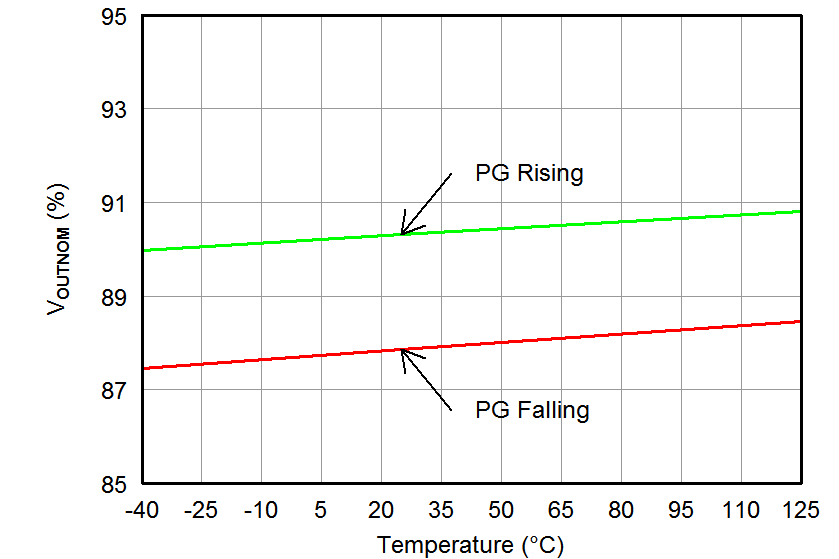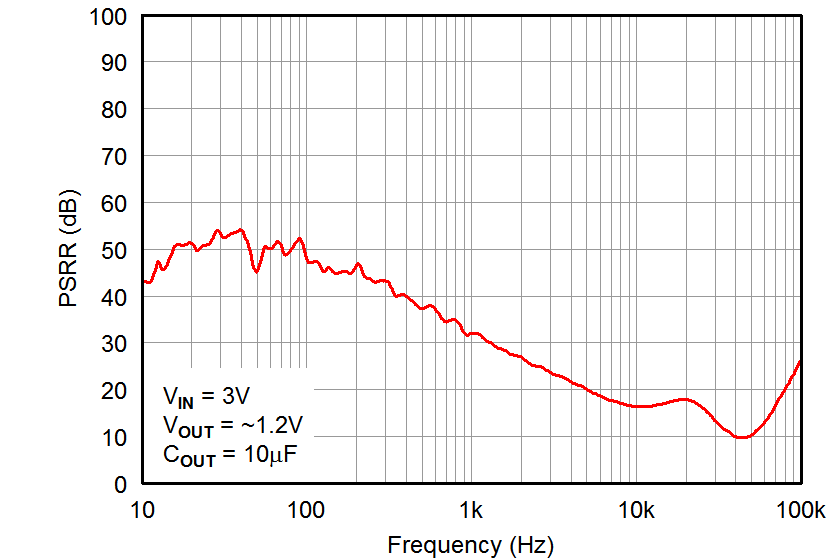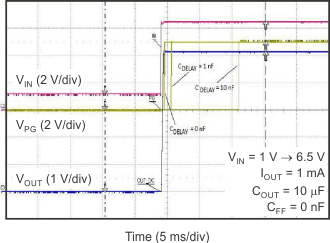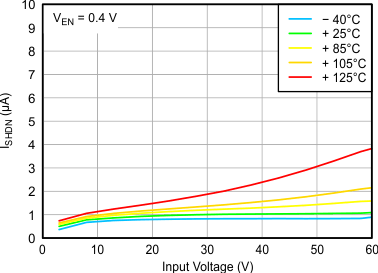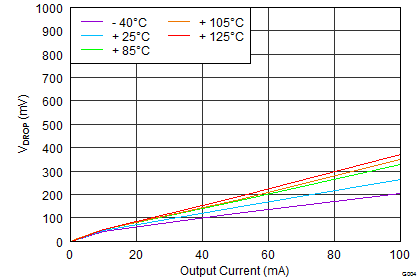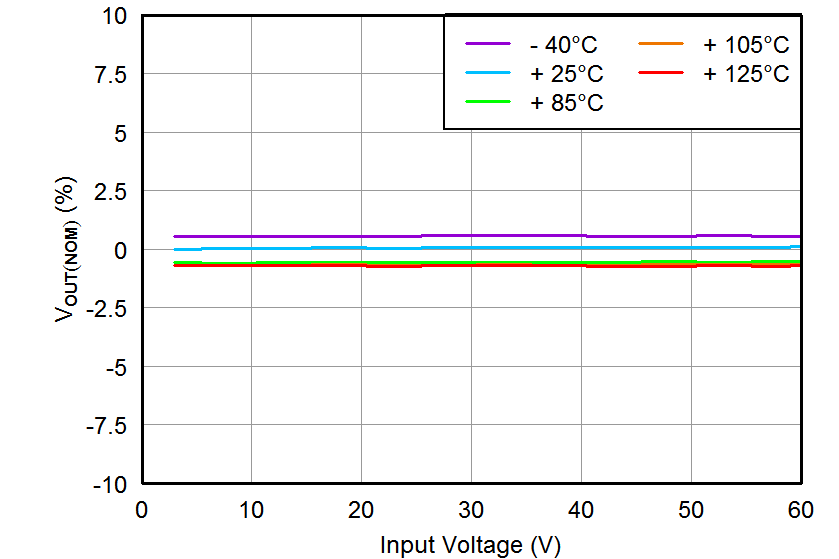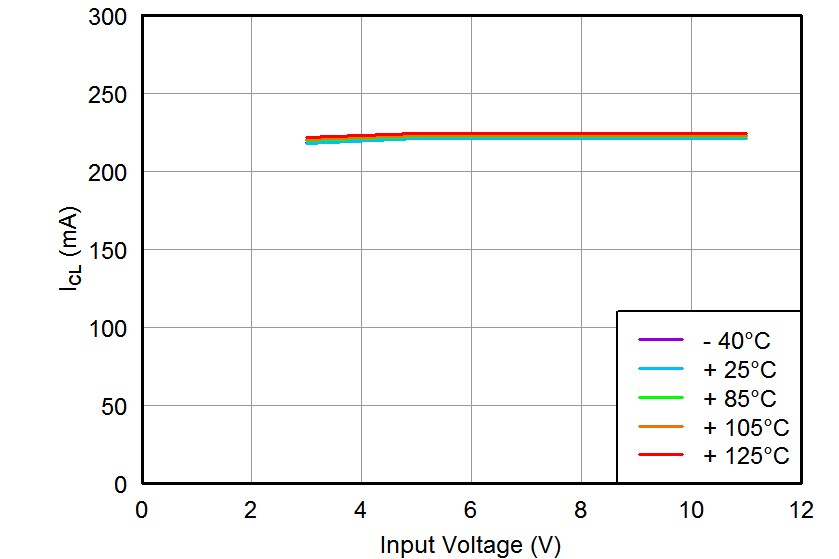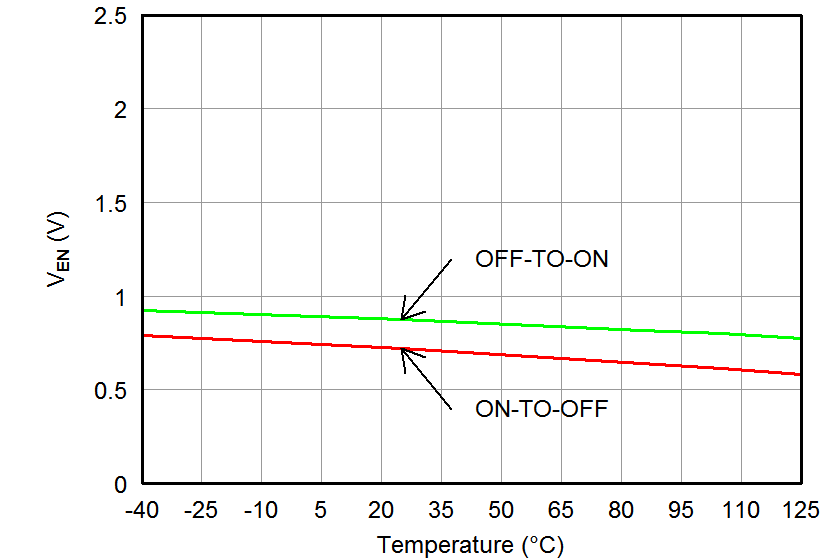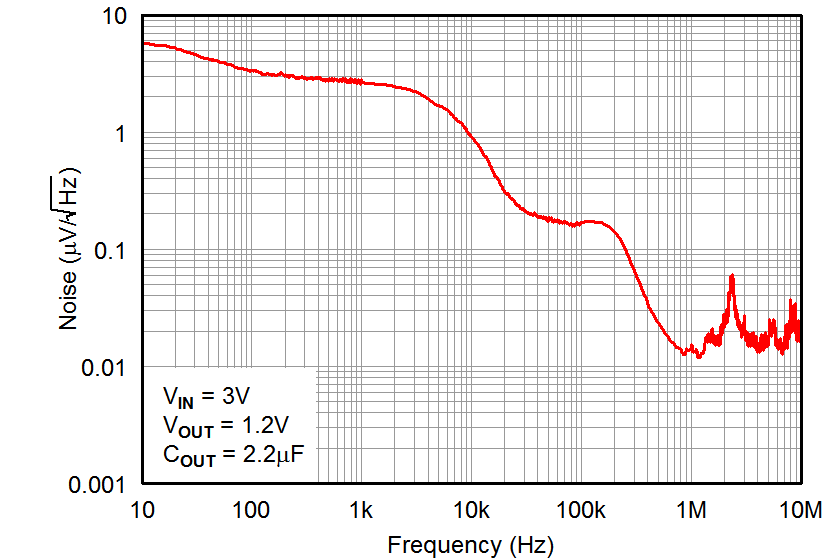SBVS342A February 2019 – March 2019 TPS7A16A-Q1
PRODUCTION DATA.
- 1 Features
- 2 Applications
- 3 Description
- 4 Revision History
- 5 Pin Configuration and Functions
- 6 Specifications
- 7 Detailed Description
- 8 Application and Implementation
- 9 Power Supply Recommendations
- 10Layout
- 11Device and Documentation Support
- 12Mechanical, Packaging, and Orderable Information
Package Options
Mechanical Data (Package|Pins)
- DGN|8
Thermal pad, mechanical data (Package|Pins)
- DGN|8
Orderable Information
6.6 Typical Characteristics
at TA = –40°C to 125°C, VIN = VOUT(NOM) + 0.5 V or VIN = 3 V (whichever is greater), VEN = VIN, IOUT = 10 µA, CIN = 1 µF, COUT = 2.2 µF, and FB tied to OUT (unless otherwise noted)